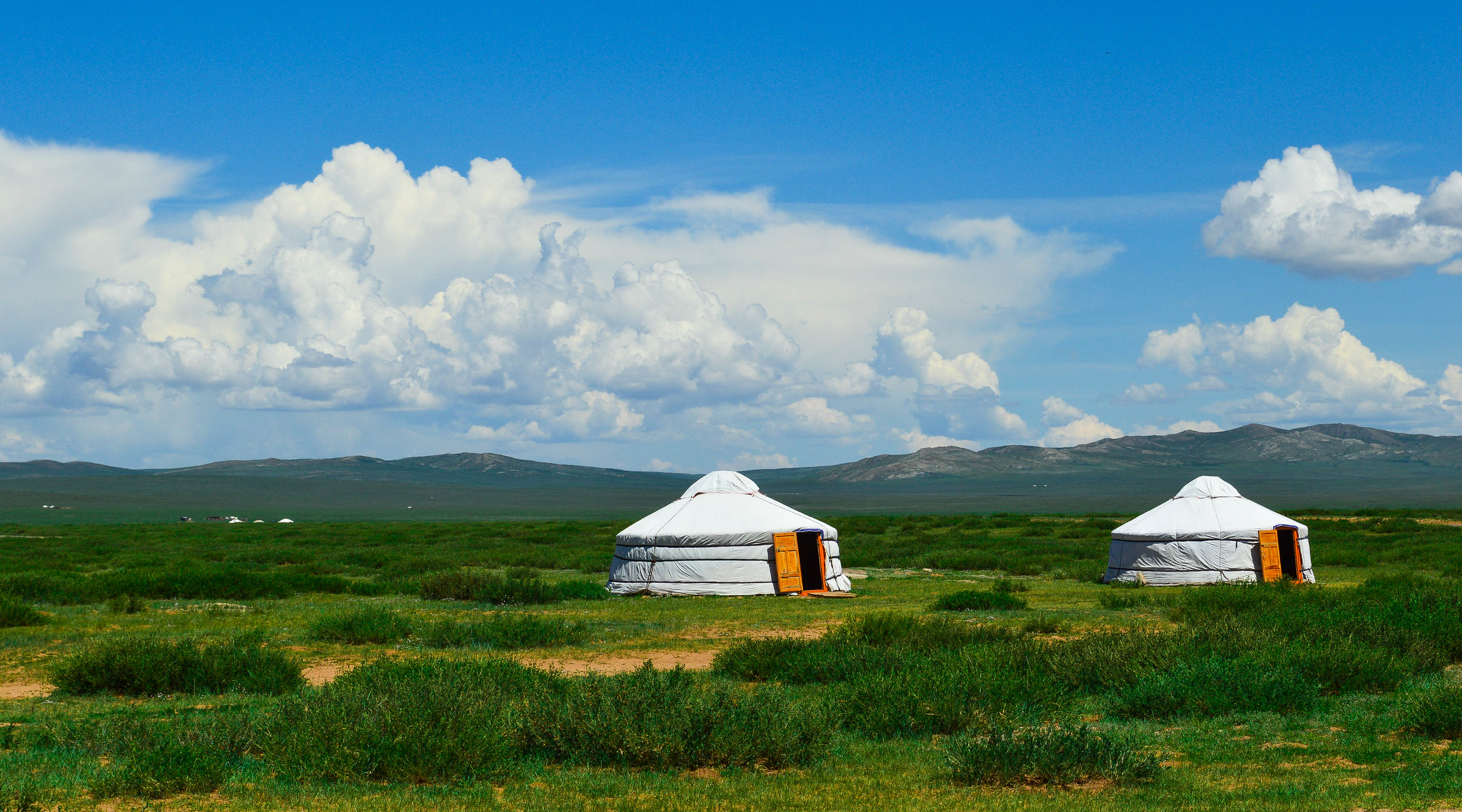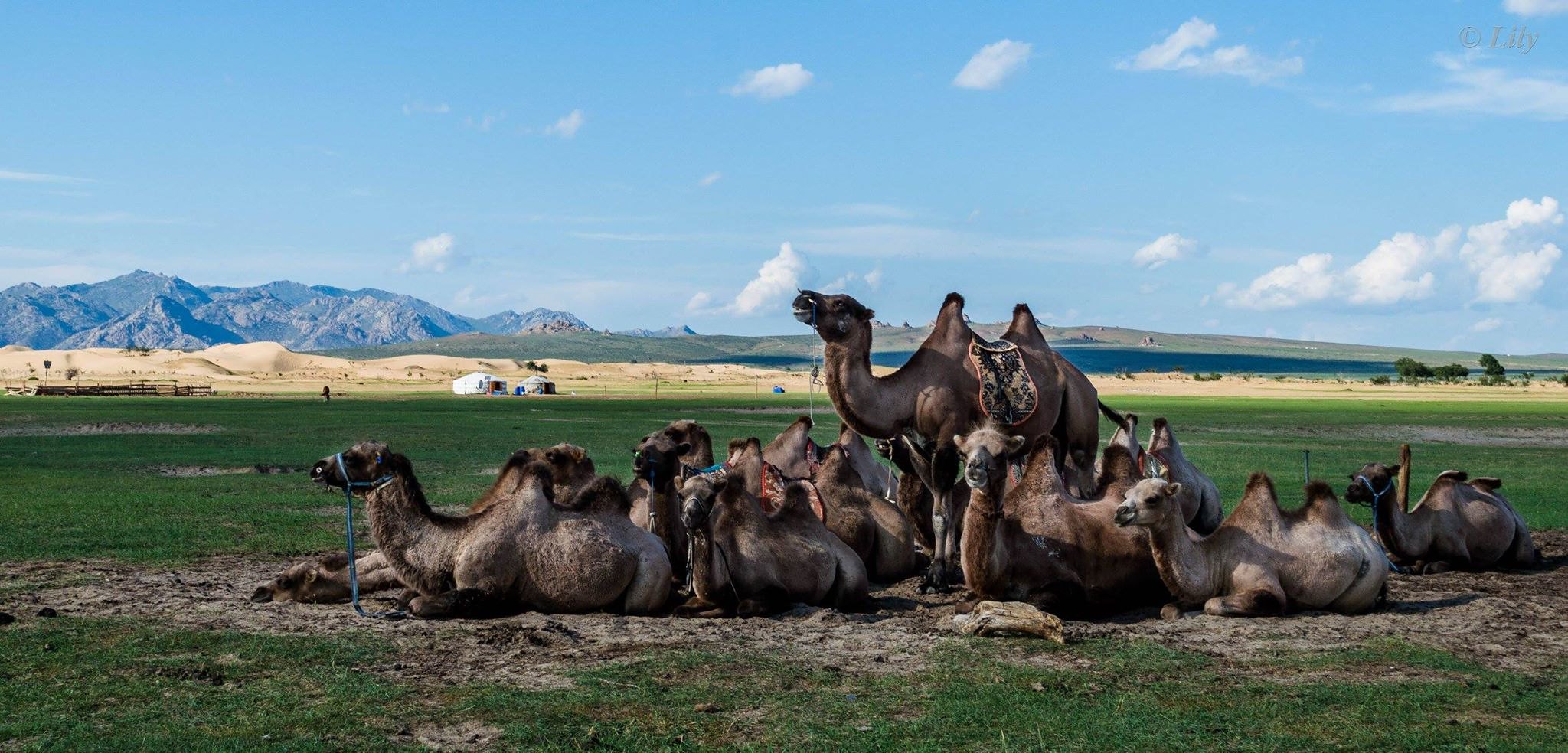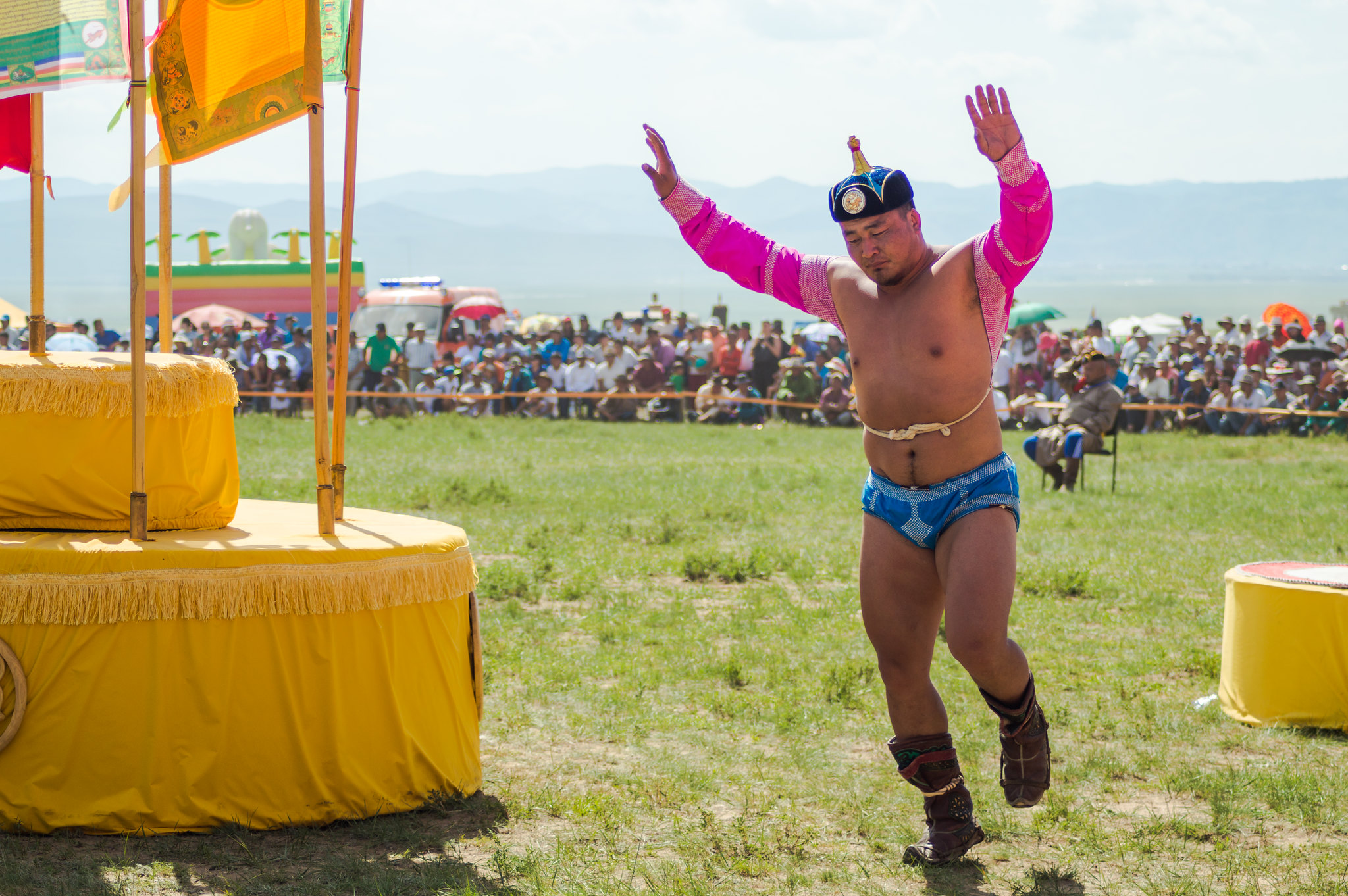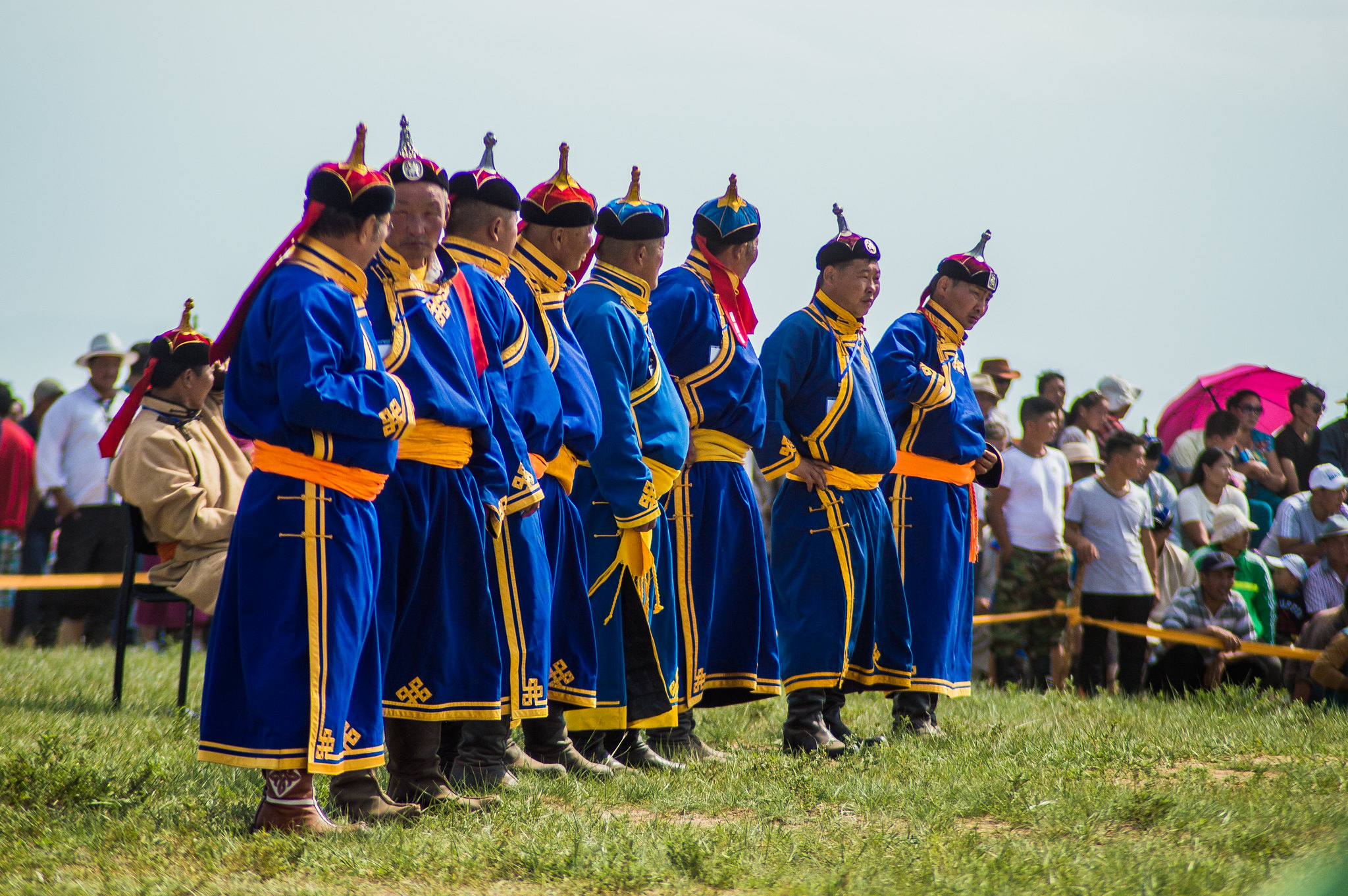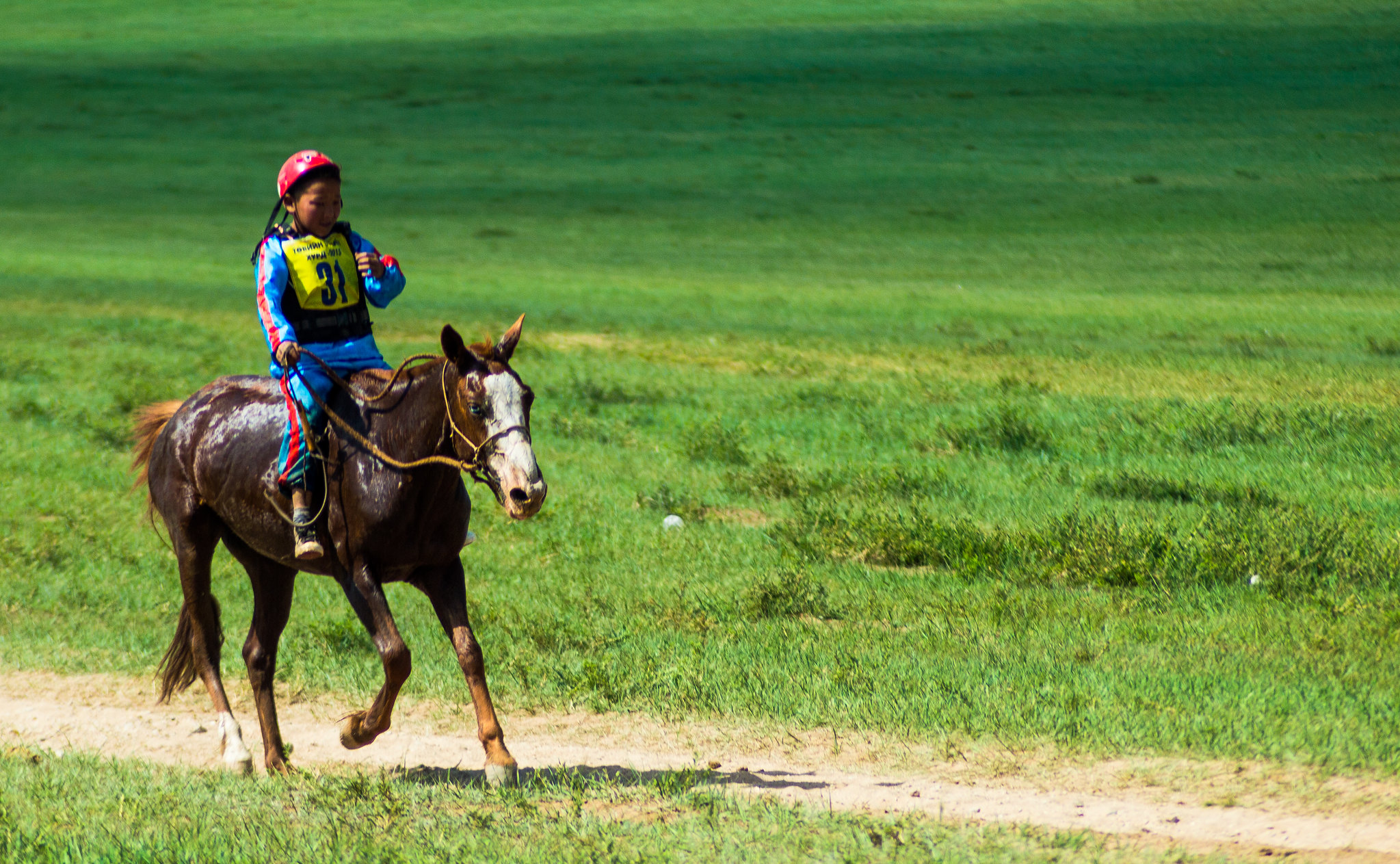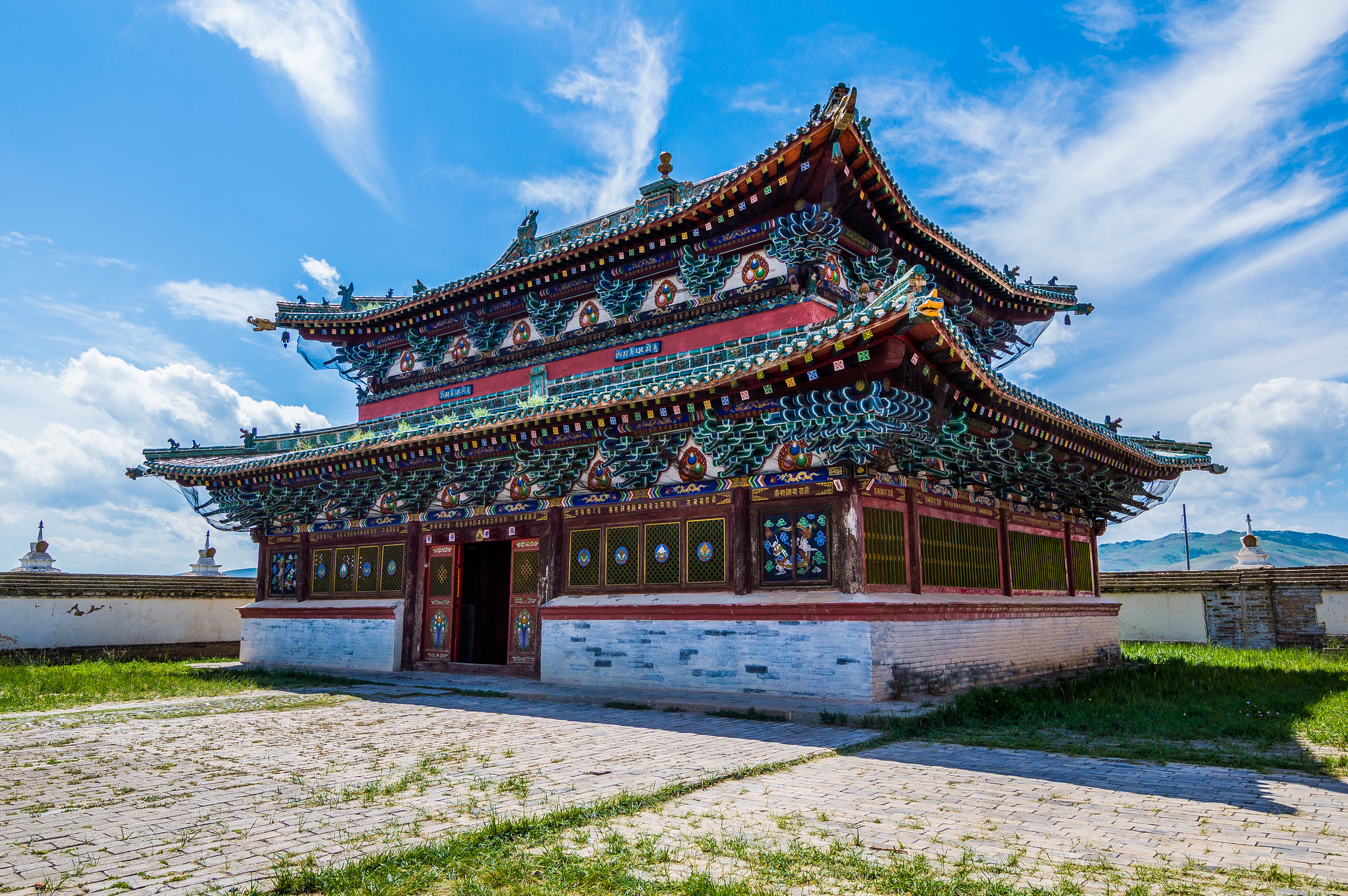Nomadic Voyages with Rural Naadam Festival in Khuvsgul Lake (18 days / 17 nights)
- Region:
- Southern, Central & Northern part of Mongolia
- Duration:
- 18 days / 17 nights
- Dates:
- July 9-26, 2024
June 26 – July 13, 2024 - Note:
- You can arrange your own trip date (with best rate possible) as you request
- Number of travelers:
- Min - 2, Max - 18
Single supplement: $580
BOOK TRIP CUSTOMIZE THIS TOUR What is Ger Camp? DOWNLOAD ITINERARY AS A PDF
Quick inquiry
- Attend the Rural Naadam Festival at Khatgal village, cheer for the wrestlers, jockeys and archers at competitions.
- Visit Mongolia’s renowned Hustai Nuruu National Park - home of the Przewalski horse.
- Sip tea in the doorway of a traditional nomadic ger as you watch the sun set over the vast expanse of the Gobi Desert.
- Explore Kharakhorum, the 13th century capital city of Mongolia and Erdenezuu monastery;
- Enjoy climbing towering Singing Dunes, hiking in the mountains in search of mountain argali sheep and goats; walking at the internationally famous Flaming cliffs trying to repeat success of Dr. Roy Andrews Chapman’s expedition in early 1920s, who discovered the first egg nest the world ever seen; as well riding a camel in the desert and a horse in the Mongolia’s grasslands;
- Explore the country from to south to north and west, exploring one ecosystem gradually transitioning to another one;
- Experience unique opportunity to stay in a ger, Mongolian traditional dwelling, at our comfortable Gobi ger camp, where you can visit there the only in the Gobi antique ger museum and take photos wearing Mongolian traditional costumes for your long and unforgettable memory about Mongolia.
- Dream of Genghis Khan as you listen to the eerie and otherworldly sound of Mongolian throat-singing.
Single supplement: $580
| Included | Not included |
| Private ger for every 2 people in Ger camp | International airfare |
| All meals as listed in itinerary | Travel insurance |
| All entrance fees | Beverages |
| Sightseeing as per itinerary | Optional activity cost |
| Accommodation in 4 stars hotel in Ulaanbaatar (twin standard room double occupancy) | Excess baggage charge |
| Transportation by 4WD vehicle | Single room supplement |
| English speaking guide (other language guide on request | Any additional things which are not mentioned above |
| Daily supply of bottled water, Domestic Flight |
July 9 - Day 1 Arrive in Ulaanbaatar & City Tour
Arrive in Ulaan Baatar and transfer to your centrally located hotel. Enjoy an evening tour of Ulaan Baatar
city, including the War Memorial at Zaisan if time permits. Rest of the day is for rest and to recover jet
lag and travel fatigue.
The first stop is at Sukhbaatar Square, which is the central square named after the revolutionary hero
of 1921 Damdiny Sukhbaatar whom declared independence from China. You will visit the Gandan Monastery that
is the largest and most famous functioning monastery in Mongolia; here you may experience the monks in
worship and see the impressive Golden Buddha Statue of Migjid Janraisig. Time permitting you can visit the
Natural History Museum which is famous for its authentic dinosaur skeletons and also visit the Zaisan
memorial hill to get a fantastic view of whole city. You will have a welcome dinner at local restaurant.
Meals: Breakfast, Lunch, Dinner
Lodging: 4 star hotel
July 10 - Day 2 Moron / Hovsgol Lake
After an early breakfast at the hotel, fly into Moron, the center of the Hovsgol province. From Moron, you will be driven to the base camp at Lake Hovsgol (approx. 70 miles). With an area of 1,012 sq. miles lying near the Russian border, Hovsgol is Mongolia’s largest freshwater lake. It is more than 800 feet deep and more than a mile above sea level. The remainder of the day is at your leisure. Overnight at the camp
Meals: Breakfast, Lunch, Dinner
Overnight in the Ger Camp
July 11 - Day 3 Rural Naadam Festival in Khuvsgul lake
During whole lovely day you enjoy watch Naadam festival or three manly sports such as wrestling, archery and horse racing. Visit opening ceremony of Naadam festival at the Khatgal town. And you will see archery, wrestling and horse racing during Naadam festival. Naadam festival is of the victory of the People’s Revolution. Mongolia celebrates its independence and its rich cultural heritage with a festival of sports and revelry in Ulaanbaatar. The distinctly Mongolian feel and flair of the Naadam Festival make it a wonderful spectacle, a joyous time, and an intriguing cultural event. Colorful ceremonies and parading soldiers kick off the celebrations. The ancient game of wrestling follows, with men competing in many rounds of competition. Both men and women compete in the archery games, using the traditional Mongolian compound bow that terrorized Europe when Genghis Khan and his Golden Horde moved their empire west. The quintessentially Mongolian art of horse racing follows, where up to 800 horses compete, jockeyed by children so that the skill of the horse, and not the rider, is tested.
Meals: Breakfast, Lunch, Dinner
Overnight in the Ger Camp
July 12 - Day 4 Hovsgol Lake Hiking and Wildlife
After breakfast at the camp you will have a full day to explore the breathtaking shores of this beautiful
lake. There is ample opportunity to discover the local nomadic lifestyle. You can plan hiking and photo
ventures along the shorelines, which are excellent habitats for wildlife and birds.
Walking and hiking in the lake shores, Horse riding trek near the lake, visiting yak breeding family
and experience their unique lifestyle
Meals: Breakfast, Lunch, Dinner
Overnight in Ger Camp
July 13 - Day 5 Moron to Ulaanbaatar
Drive to airport after breakfast. Take the flight back to Ulaanbaatar and transfer to hotel. Rest of the day is for rest.
Overnight in 4 star hotel
Meals: Breakfast, lunch and dinner
July 14 - Day 6 Fly to the Gobi Desert (1.2 hours) and then drive to Bayanzag
Drive to flaming cliffs known as Flaming Cliffs is located 20 kilometers away from Bulgan soum, a lot of Paleontological findings have been discovered here. The place is known as 'Flaming Cliffs' was named by Roy Chapman Andrews, an American explorer who had visited Mongolia in 1922 and over the course of two years he searched throughout the Mongolian Gobi Desert and found dinosaur fossils and dinosaur eggs about 10-15 cm. It was the first discovery of its scale and kind in the world that had been made at the time.
Overnight in Ger Camp,
Meals: Breakfast, lunch and dinner
July 15 - Day 7 Bayanzag to Khongor Sand Dune
After breakfast, take in the stunning scenery of the Gobi-Altai Mountain range as you transfer to the towering sand dunes of Khongoryn Els, home to the ‘Singing Sands’. These spectacular dunes got their name from the noise made by the shifting sand in the wind. Feel the breeze in your hair as you ride a camel across the dunes before returning to the ger camp. Isolated from the rest of the country, the Singing Sands are the best kept secret for thousand years in the history of Mongolia.
Overnight in the Ger Camp
Meals: Breakfast, lunch and dinner
July 16 - Day 8 Khongor sand dunes
Today we will have a full day exploring the sand dunes and rest after the long drive. The dunes seem to stretch on forever like a soft ribbon of sand draped over the desert. The shifting sand blown by the wind or someone makes sound so it is called Singing Sand Dunes. There is a beautiful green oasis known as Seruun bulag near the Khongor River. Return to the camp for lunch and enjoy feeling silence and a peaceful in the beautiful surroundings Gobi Deserts.
Overnight in the Ger Camp
Meals: Breakfast, lunch and dinner
July 17 - Day 9 Drive to Yol Valley and Gurvan saikhan National Park
In the morning, we drive to Yol Valley. Learn about the local wildlife in the Natural History Museum before taking a gentle hike through the valley to discover their habitats. This valley is nestled deep within the hills and is a safe haven to get away from the desert heat. Some areas of the valley are continually sheltered from the hot sun and house huge, blocks of ice that gradually melt away during the summer. It is very wide at the entrance and narrows gradually into a remarkable gorge. You will get to see wild animals such as ibex and wild sheep, and the vulture. You can go horseback or camel riding around the area and go trekking to the gorge. Tonight is your first night in a traditional Mongolian ger camp.
Overnight in the Ger Camp
Meals: Breakfast, lunch and dinner
July 18 – Day 10 Day trip to Khavtsgait Petroglyphs and Nomads day
In the morning we drive to the site of the Khavtsgait Petroglyphs. The Khavtsgait Petroglyphs from the Bronze
Age (4000-3000 BC) are beautifully carved on many rocks on the top of a sacred mountain. It is easy to find
the rock paintings there because they are spread on rocks all around. The area is very rocky and can be
slippery to climb, but by carefully following a path up the mountain, you can reach the top to see these
beautiful rock paintings.
The petroglyphs were carved and painted with motifs consisting of animals, hunting scenes and weapons.
They depict various animals related to everyday life of ancient people including deer, bears, wolves and
hunters, and wolves with livestock. Other paintings depict more domestic scenes of yaks pulling carts, the
wheels and horses flattened sideways like hieroglyphs, and herders on horseback. The engravings vary in
size, ranging from two-centimeters to the real life size of horses.
After the rest, we will visit a herder family nearby. We will spend some time there getting to know the
family members and their casual yet unique daily lifestyle. It is a good chance to see how the family
members cooperate together to do their daily even hourly chores such as milking mares, fencing and milking
the goats. If you wish, you are welcome to try some mare's fermented milk and other dairy products.
Overnight in the Ger Camp
Meals: Breakfast, lunch and dinner
July 19 - Day 11 Bayanzag to Ongi Temple
Drive to Ongi temple. The ruins of Ongi Temple are found in Saikhan Ovoo soum of Dundgobi (Middle Gobi) province. It used to be a big Buddhist monastery compound built by Bari Yonzon Khamba at the bank of Ongi River. Transfer to the camp before the lunch. Visit the ruins of temple also there is small ger museum signifies ancient things.
Overnight in the Ger Camp
Meals: Breakfast, lunch and dinner
July 20 - Day 12 Ongi temple to Karakorum (Erdenezuu monastery)
Early morning drive to Karakorum and arrive late afternoon, on the way picnic. Ancient capital of Mongolia
Karakorum city was located on the right bank of Orkhon River and on the north-eastern slopes of the Khangai
Mountain and founded by Chinggis khan in 1220, was not only the capital of the vast Mongolian Empire but the
epicentre of trade along the Silk Road. At that time the inhabitants of city were mostly Merchants craftsmen
who came to karakorum from all over the world. Khubilai khan moved to the capital of the Mongolian Empire to
China, establishing the Yuan Dynasty, began losing its importance. In 1379 much of the city was badly
damaged during an attack by the army of the Min Dynasty.
Erdene Zuu monastery
Erdene zuu monastery was built by Avtai Sain Khan on the ruin of the Mongolian capital Karakorum in
1586. It was the first great Buddhist Monastery of Mongolia. It is part of the World Heritage Site entitled
Orkhon Valley Cultural Landscape. Stones from the ruins of Karakorum were used in construction. It is
surrounded by a wall featuring 108 stupas, 108 being a sacred number in Buddhism, and the number of beads in
a Buddhist rosary. The monastery was damaged by warfare in the 1680s, but was rebuilt in the 18th century
and by 1872 had a full 62 temples inside. The Erdene Zuu Monastery was taken to state protection and became
museum in 1944.
Overnight in Ger Camp
Meals: Breakfast, lunch and dinner
July 21 - Day 13 Karakorum to Tsenher Hot Spring
Following breakfast at tourist camp, we will drive to Tsenher hot spring. Along the way we will stop for a break in the small town of Tsetserleg to visit a monastery museum. We spend overnight in a ger camp based at natural hot springs. Soak in hot water; enjoy a hike in the hills.
Overnight in Ger Camp,
Meals: Breakfast, lunch and dinner
July 22 - Day 14 Tsenher Hot Spring to Elsensen Tasarkhai via Ugii Lake
In the morning drive to Ugii Lake. On the way we will be visiting two monuments of Turkish and about 60 kilometers from the imperial town of Karakorin. There are two important monoliths located near another one. The first monument is dedicated to the Turkish prince Kul-Tegin (638-731), and the other to his brother Bilge-Khan (716-734). After lunch, we drive to Elsen tasarkhai. On the way visit nomad family, exploring how do they live in yurt, how do they make diary product, chance to take some picture and attempt to drink fermented mare’s milk.
Overnight in Ger Camp
Meals: Breakfast, lunch and dinner
July 23 - Day 15 Elsensen Tasarkhai to Hustai National park
Drive to Hustai National Park Hustai National Park is the site of a unique re-introduction scheme of Przewalskii’s horse (Equus przewalskii), called "takhi" by Mongolians. It became extinct in the wild in 1969 and, since 1992, has been successfully re-introduced to Hustai from zoos around the world. This has been an international effort monitored by The Foundation for the Przewalskii Horse, based in the Netherlands and MACNE (Mongolian Association for Conservation of Nature and the Environment). The national park is rolling Steppe Mountains with rather large patches of birch and aspen forests. There are also visible remains of Neolithic graves. In addition, red deer (Cervus elaphus) and wolf (Canis lupus) have increased quite a bit during the last few years, as well as Mongolian gazelle. Species present in Hustai but usually not seen include Lynx, Argali Sheep and Roe Deer.
Overnight in the Ger Camp
Meals: Breakfast, lunch and dinner
July 24 - Day 16 Hustai National Park to Terelj National Park
Following morning breakfast, drive to Gorkhi Terelj National Park. This unforgettable excursion will take you
to features such as scenic valleys, a winding river, and restful groves of trees. Many nomads live in the
park itself, where they find lush land for their animals, and you may even see majestic herds of yak grazing
near the camp. Once inside the park you will be able to visit the notable rock formations "Turtle rock" and
“Monk reading a book." You will also have the opportunity to hike up to the Aryabal meditation center and
learn more about Mongolian Buddhism.
On the way to the national park, you will take a detour to visit the giant Statue of Chinggis Khan which
stands 40m (132 ft) high. The monument is about 33 miles east of Ulaanbaatar and stands at the point where,
according to legend, he found a golden whip. The statue is symbolically pointed east, towards his
birthplace. It is on top of the Chinggis Khan Statue Complex, a visitor center, itself 10 meters (32 ft 10
in) tall, with 36 columns representing the 36 khans from Genghis to Ligdan Khan. It was designed by sculptor
D. Erdenebileg and architect J. Enkhjargal and erected in 2008.
Meals: Breakfast, Lunch, Dinner
Overnight in Ger Camp
July 25 - Day 17 Ulaan Baatar: Bogdo Khaan Winter Palace
After breakfast, we will drive to Ulaanbaatar and transfer to hotel. Visit the Bogd Khaan Winter Palace Museum. The Bogdo Khaan Winter Palace is the home of the last Mongolian King, Javzun Damba Khutagt VII. The museum contains a number of Buddhist artworks and the private collection of Bogdo Khaan, composed of gifts from rulers and kings from all over the world. The artworks displayed here were made by the top Mongolian, Tibetan, and Chinese master-sculptors of the 18th and 19th centuries and represent the gods of Buddhist pantheon. In the afternoon free time do shopping for cashmere shop, souvenir shop and State Department Store. Enjoy watch national folklore performance by “Tumen Ekh” national song, throat singing, tsam mask dance and so on. A farewell dinner and stay overnight in hotel.
Meals: Breakfast, Lunch, Dinner
lodgine: 4 star hotel
July 26 - Day 18 Departure
Check out from the hotel and transfer to the “Chinggis Khan” International airport for departure.
Single supplement: $580
| Included | Not included |
| Private ger for every 2 people in Ger camp | International airfare |
| All meals as listed in itinerary | Travel insurance |
| All entrance fees | Beverages |
| Sightseeing as per itinerary | Optional activity cost |
| Accommodation in 4 stars hotel in Ulaanbaatar (twin standard room double occupancy) | Excess baggage charge |
| Transportation by 4WD vehicle | Single room supplement |
| English speaking guide (other language guide on request | Any additional things which are not mentioned above |
| Daily supply of bottled water, Domestic Flight |

